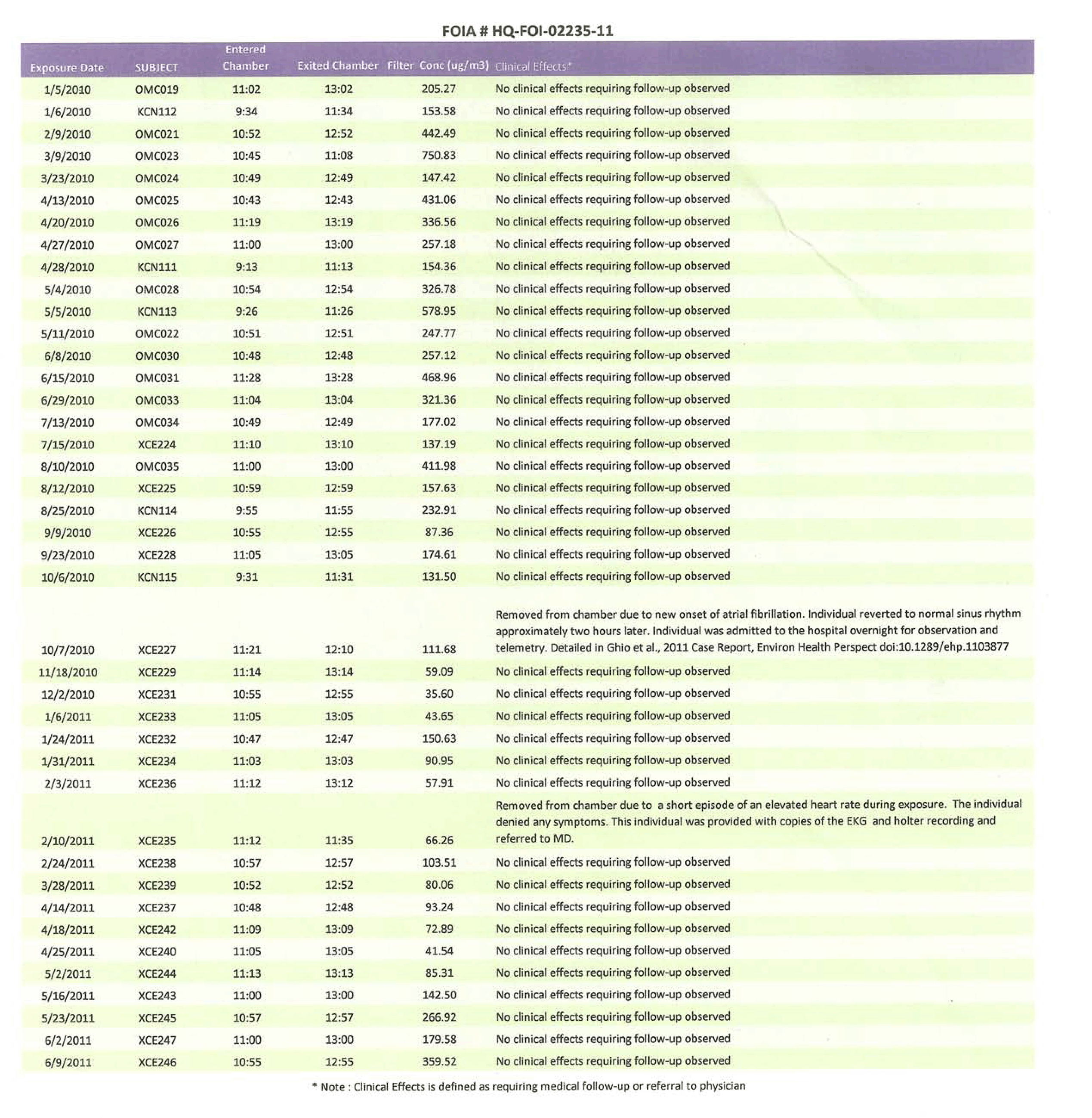The EPA responded on November 21, 2011 to Milloy’s request made under the Freedom of Information Act for the results of human experiments similar or related to the Case Report.
The response (below, click to enlarge) shows that, since 2010, the EPA has conducted at least 41 experiments during which humans were exposed to varying levels of PM2.5.
The EPA response shows the following:
- The 41 experiments occurred between January 10, 2010 and June 9, 2011.
- Two subjects had their experiments terminated because of health concerns. One was the 58-year old woman spotlighted in the Case Report. The other was a subject who was observed to have a “short episode of an elevated heart rate during exposure,” but who “denied any symptoms.” [Note this study subject was not mentioned or alluded to in the Case Report.]
- All the subjects were exposed to PM2.5 at levels above EPA’s permissible daily standard of 35 micrograms per cubic meter. Seven exposures exceeded 10 times the EPA standard and one exposure exceeded 21 times the EPA standard (i.e., the 750.83 microgram per cubic meter exposure that occurred on March 9, 2010.]
- The Case Report was the 23rd study subject exposed. So there were 18 study subjects who were subsequently tested.
- The elevated heart rate subject was the 30th subject exposed, Eleven human subjects were tested subsequently tested.
- Study subject numbers begin with mysterious prefixes (i.e., OM, KCN, XCE). What do these mean? You’ll find out in a subsequent stop on the tour.
- No clinical effects were reported for 39 of the 41 study subjects (95%).
Things are getting even more interesting now as this issue has produced another controversy — i.e., potential research misconduct stemming from the omission of any mention of the 40 other human experiments from the Case Report. And so you have a choice to make.
If you want to continue following the human testing issue then: NEXT: Milloy Makes Additional FOIA Requests of EPA
If you want to follow the research misconduct issue then: NEXT: Data Omission Constitutes Research Misconduct.
